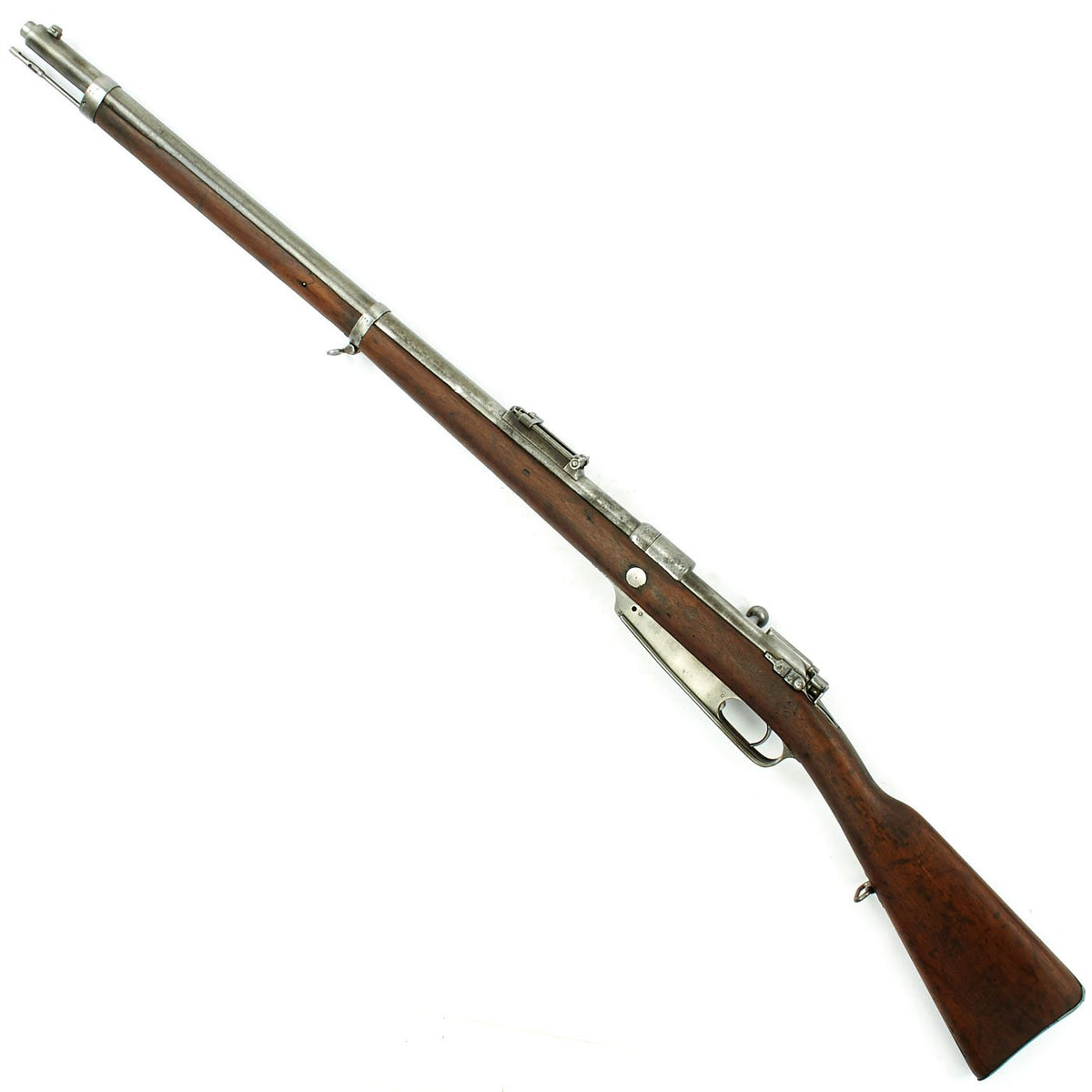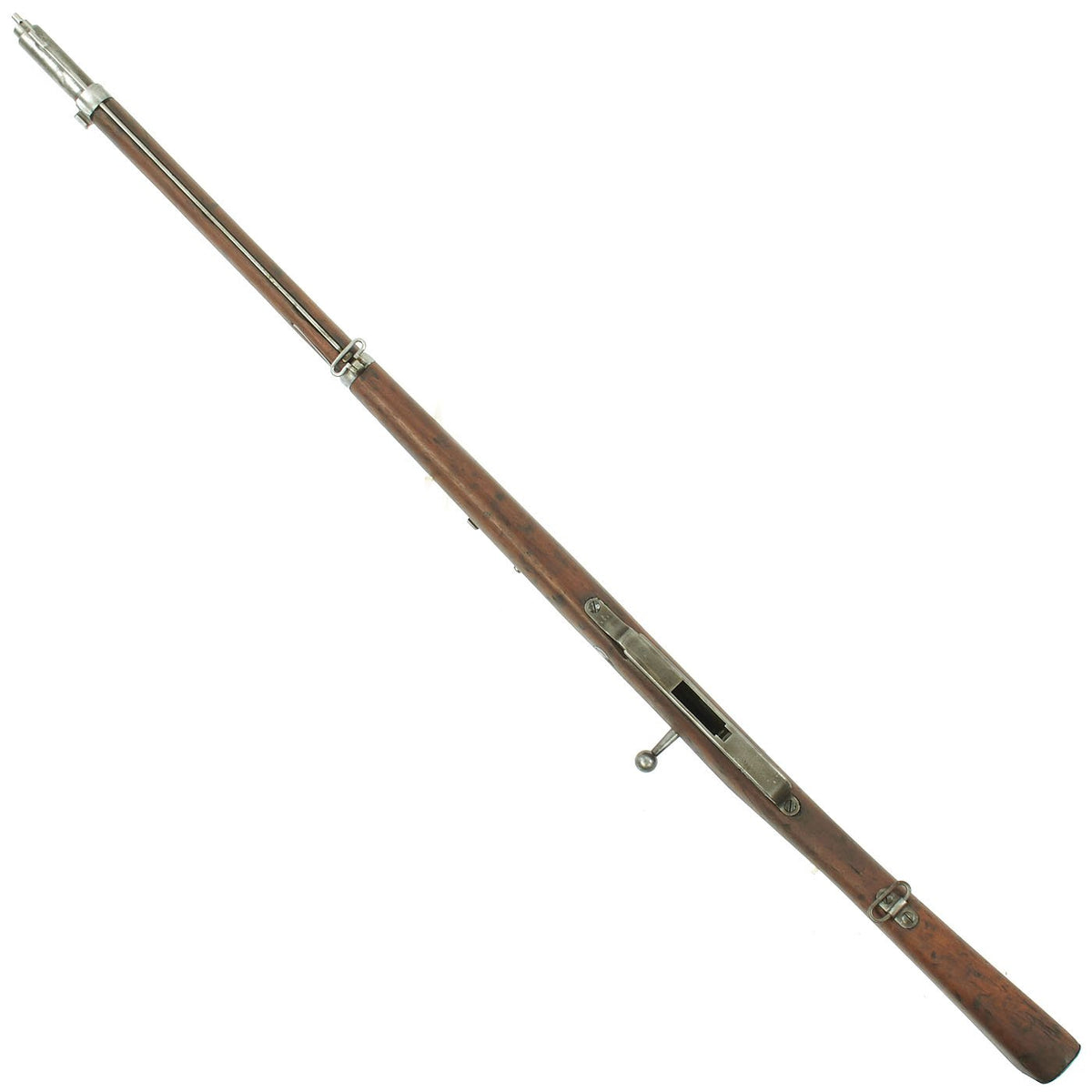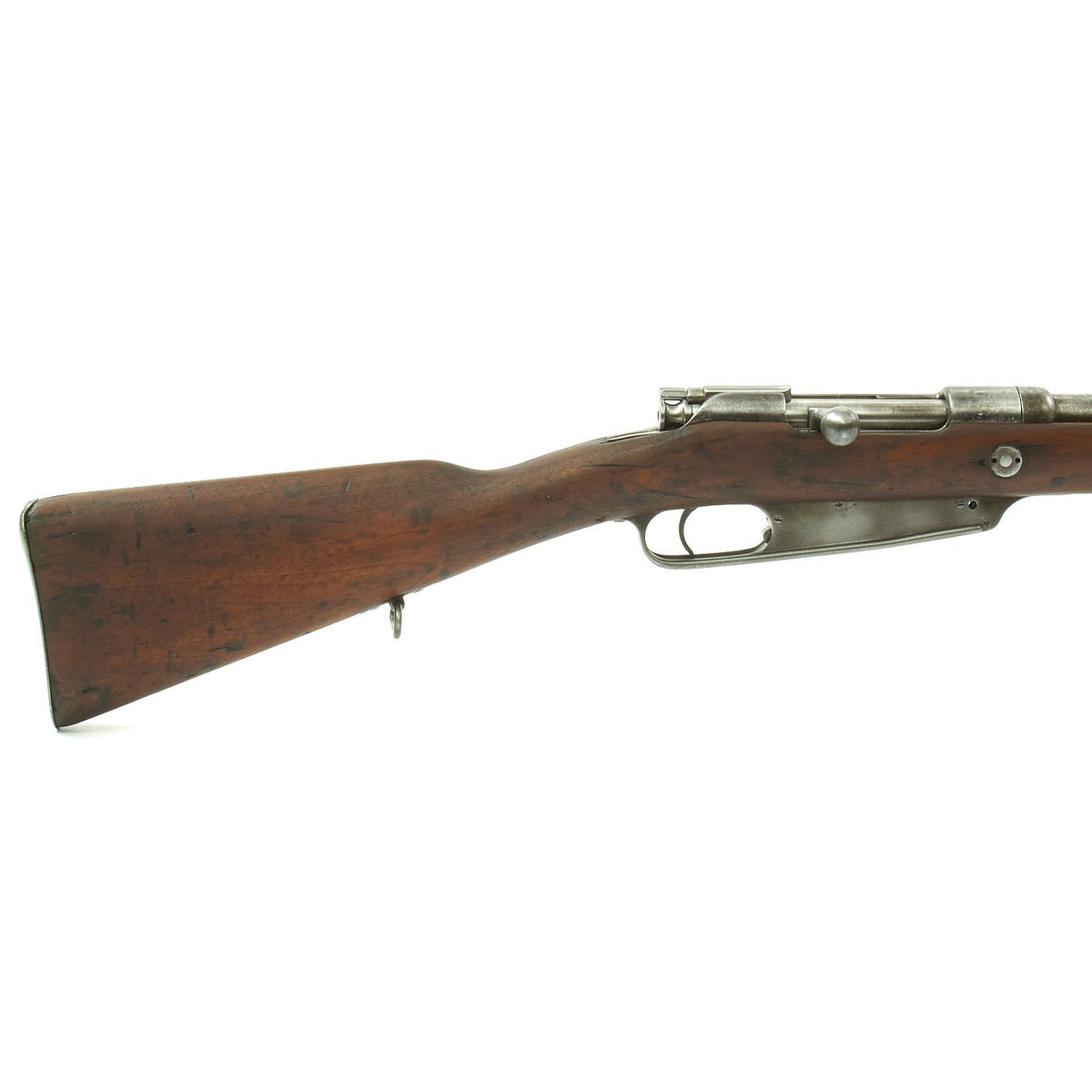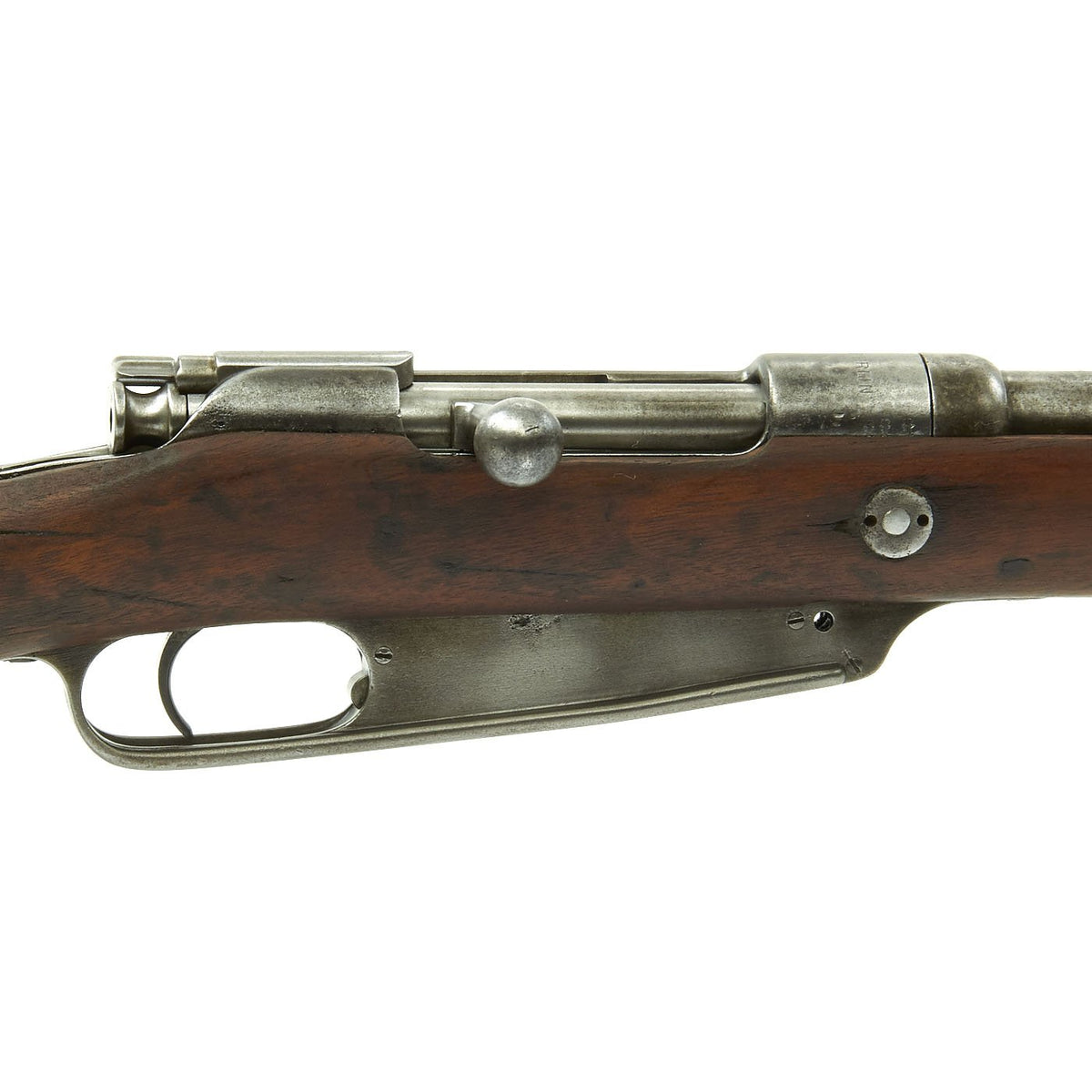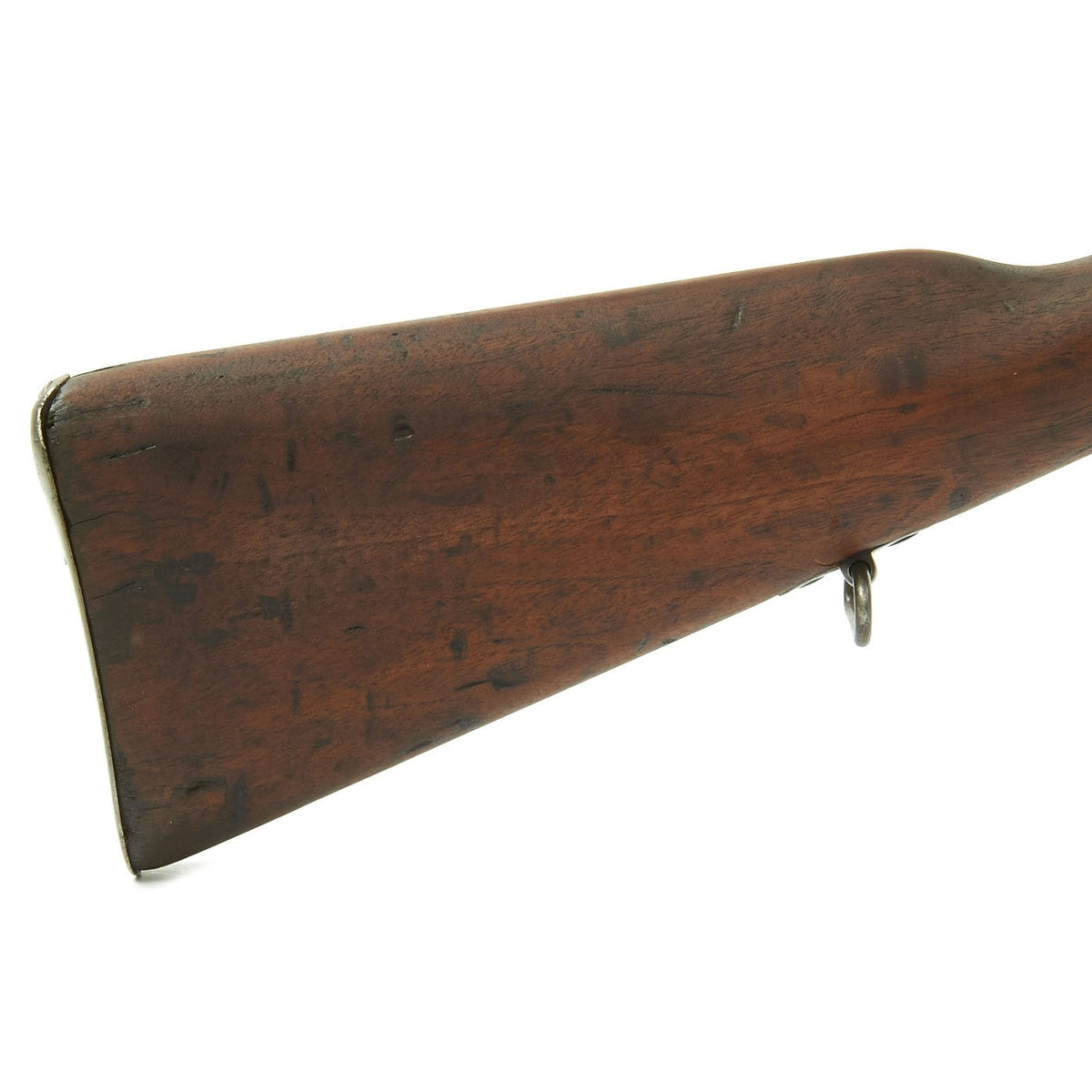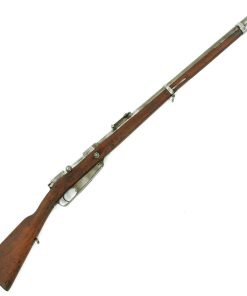Original German Pre-WWI Gewehr 1888 S Commission Rifle by Ludwig Loewe Berlin dated 1891 Original Items
$ 695,00 $ 208,50
Original Item: Only one Available. This is a good example of the iconic German Gewehr 1888 “Commission Rifle”, also known as the Gewehr 88, or GEW 88. It was made by Ludwig Loewe & Company in Berlin, the company that eventually become the famous Deutsche Waffen- und Munitionsfabriken Aktien-Gesellschaft (German Weapons and Munitions public limited company), known more commonly as DWM. They were a major producer of weapons for Imperial Germany before and during the First World War.
The rifle then saw long service, as indicated by the large number of different markings on the gun, and the mis-matched serial numbers. It still retains the original German Regimental Markings on the side of the receiver: 155. R. 11. 93., which would be for the 155th (7th West Prussian) Infantry Regiment, 11th Company 93rd man. This regiment was only raised in 1897, so this rifle was probably transferred there after use. There is also a crossed out regimental number on the lower barrel band, 3. G. R., indicating it was previously issued to the 3rd Foot Guards regiment in Berlin.
These rifles were originally chambered for 7.92mm Patrone 88 ammunition and had a fixed magazine. Virtually all Gewehr 88 rifles in service were converted to take the 7.92×57mm Mauser S Patrone, and had an S stamped above the chamber, indicating the conversion. This rifle has the “S”, but not the notch at the front of the receiver, and it has no stripper clip guides, so it was not converted after 1905 for the clips. The design of the clips necessitated making a notch in the front receiver, so the cartridge tips would clear it.
The right side of the receiver is marked Gew. 88. in German blackface type and also has serial numbers 4510 / c on the barrel, 5138 on the receiver and 2794 on the trigger guard / magazine. The other numbers are also un-matching, so this is definitely an arsenal refurbished rifle. Over the chamber it is clearly marked LOEWE BERLIN / 1891, for manufacture by Ludwig Loewe company in Berlin.
Rifle is in very good used condition, with a solid stock and metalwork. It still retains the rare “double slot” cleaning rod, which is in good shape. The metalwork overall has a worn gray patina with light peppering, from decades of storage. The stock does not have any repairs or major damage, except for some cracking on the forestock along the woodline. The bore has a bright finish with clear lands and grooves, which we would rate at excellent.
An absolutely genuine GERMAN contract M-1888 Service Rifle, issued to a German Infantry Regiment. Almost all of these were later updated to the 88/05 S standard, so finding one that was not updated or shipped to Turkey as aid is very rare. Fully cleaned and ready to display!
History of the Gewehr 88
In 1886, the French Army unveiled the Modelle 1886 “Lebel” rifle. There was an immediate reaction in German military circles bordering on hysteria. Why? Because the Lebel was the world’s first small bore military rifle using an efficient smokeless powder cartridge. Now, the Lebel, which used a tubular magazine located under the barrel was not a particularly noteworthy design, but the power and flat trajectory of the new French 8mm round far outclassed the 11mm Reichspatrone black powder round used in the contemporary German infantry rifle, the Mauser 71/84.
In this rather charged atmosphere, the German Gewehr Prfungs Kommission (GPK – Rifle Testing Commission) went to work. Initially, the idea was to revise the Mauser Gewehr 71/84 to use a small caliber smokeless powder round based on the old 11mm black powder Reichspatrone. To this extent, production machinery was ordered from the Ludwig Loewe Company of Berlin-Charlottenburg in December, 1887. As things progressed, the GPK became disillusioned with this technical approach, and so a rather strange hybrid of ideas took shape.
The bolt design was highly revised by a Spandau Arsenal technician named Louis Schlegelmilch and features a separate bolt head. The ensuing rifle had a Schlegelmilch/Mauser action, a five shot clip loaded Mannlicher style magazine (note: while the clip falls out as with the Mannlicher clips, this one was markedly improved in that it could be loaded with either end down as opposed to only one end on the true Mannlicher), and a full length barrel jacket designed by Armand Mieg. The pitch and profile of the rifling were copied directly from that of the Lebel. The cartridge chosen was a modified Swiss style rimless design based on the ideas of Eduard Rubin. By March 23, 1888, the Bavarian military observer in Berlin, General von Xylander reported that the development was virtually complete.
Field trials for the new rifle were completed in November, 1888, and the GPK recommended that it be adopted immediately. The adoption orders were signed by Kaiser Wilhelm II on November 12, 1888. Issue of the Gewehr 88 as the new rife was designated, were first made in the spring of 1889 to the XV and XVI Armeekorps stationed in Elsass-Lothringen. Issue to the Bavarian military units began in October 1889, and by August 1890, all Prussian, Saxon, and Wrttemberger line units had been re-equipped.
The Gewehr 88 was made by the three primary Prussian arsenals at Danzig, Erfurt, and Spandau, a smaller Bavarian establishment at Amberg, as well as several private contractors, including the Ludwig Loewe Company, Osterreichische Waffenfabrik Gesellschaft (Steyr), and Haenel. Production figures up to the time production ceased in 1897 are as follows:
Prussian Government Arsenals: 750,000
Amberg: 425,000
Loewe: 425,000
Steyr: 300,000
Haenel: 100,000
Total: 1,675,000
Specifications-
Year of Manufacture: 1891
Caliber: 7.92×57mm Mauser S Patrone
Cartridge Type: Centerfire Cartridge
Barrel Length: 29 Inches
Overall Length: 49 Inches
Action type: Bolt-Action
Feed System: 5 round internal magazine
Fast Shipping with Professional Packaging
Thanks to our longstanding association with UPS FedEx DHL, and other major international carriers, we are able to provide a range of shipping options. Our warehouse staff is expertly trained and will wrap your products according to our exact and precise specifications. Prior to shipping, your goods will be thoroughly examined and securely secured. We ship to thousands clients each day across multiple countries. This shows how we're dedicated to be the largest retailer on the internet. Warehouses and distribution centres can be located throughout Europe as well as the USA.
Note: Orders with more than one item will be assigned a processing date depending on the item.
Before shipping before shipping, we'll conduct a thorough inspection of the items you have ordered. Today, the majority of orders will be delivered within 48 hours. The delivery time will be between 3-7 days.
Returns
The stock is dynamic and we cannot completely manage it because multiple stakeholders are involved, including our factory and warehouse. So the actual stock may alter at any time. It's possible that you may not receive your order once the order has been made.
Our policy is valid for a period of 30 days. If you don't receive the product within 30 days, we are not able to issue a refund or an exchange.
You can only return an item if it is unused and in the same state as the day you received it. You must have the item in its original packaging.
Related products
Uncategorized
Uncategorized
Uncategorized
Uncategorized
Uncategorized
Uncategorized
Uncategorized
Uncategorized
Uncategorized
Uncategorized
Uncategorized
Uncategorized
Uncategorized
Uncategorized
Australian WWII Owen MK1 Machine Carbine SMG Custom Fabricated Replica with Sling Original Items
Uncategorized
Uncategorized
Uncategorized
Uncategorized
Uncategorized

